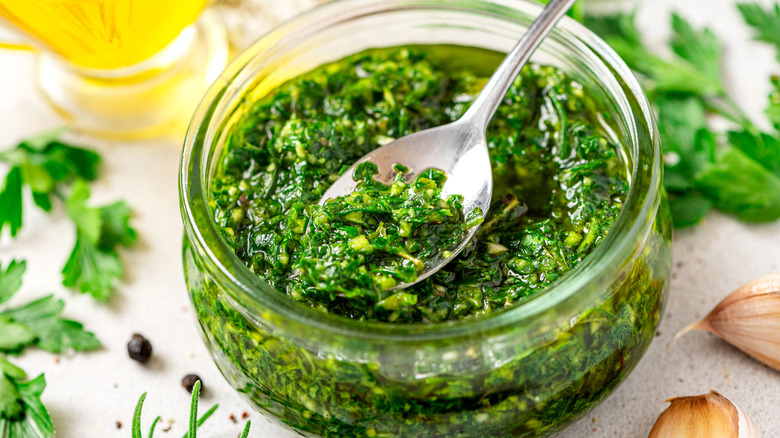The French Steak Technique You Should Try, According To Laurent Tourondel - Exclusive
There are endless ways to cook a steak, ranging from run-of-the-mill methods to restaurant-level techniques. If you've simply grown tired of the grilled sirloin that's in your weekly rotation or are looking to experiment with some new flavors, why not follow in the footsteps of an expert? For some inspiration, Tasting Table spoke exclusively with steak expert Laurent Tourondel.
His original claim to fame was the eponymous BLT Steak restaurant concept and he's now known as the chef behind New York's Skirt Steak restaurant, which features frequent lines around the block of hungry fans waiting to dive into the Instagram-worthy trays of juicy meat and sides. Safe to say Tourondel knows how to make a steak sing and when he's making them for himself at home, he's not just throwing any old cut into a pan.
Chef Tourondel shared one of his favorite methods for preparing steak, which involves leaning into his French roots, by cooking his meat in a traditional persillade sauce. This not only adds a beautiful bath of butter to the meat but brightens up the flavor of the entire dish with fresh herbs and potent aromatics.
For perfect french-style steak, give persillade a try
Persillade may sound like a fancy French term, but it's actually a lot more simple than it seems. It's made by combining fresh chopped parsley and garlic, and when combined with butter or olive oil, it makes for a pared down chimichurri or pesto that is still packed with flavor. Tourondel's cut of choice for this method is, no surprise, skirt steak.
To start, "I'll melt butter to a high temperature, and I put my skirt steak inside," says the chef. Then, he adds the persillade mix and "I baste my meat with the garlic and parsley." Tourondel notes that this simple technique "is the typical way of doing steak in France."
It adds a fresh and earthy flavor to what could otherwise be a heavy meat dish, especially when paired with a starchy side like potatoes. And persillade is not just used to flavor steaks, but poultry, lamb, fish, and vegetables as well. It can work as a classic dry rub or the base for a marinade or pan sauce, too.

